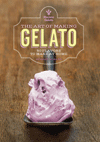The difference between innovation and invention
Dairy processors are often counted upon to invent things that do not currently exist.

Photo courtesy of Pinkybird / iStock / Getty Images Plus


We (and, perhaps, you) are continually being asked how to be more innovative. We suspect the term to be used without a clear definition nor guidance. It’s not solely an ice cream product/process development concern nor historically “new news.” Let’s start at the beginning…
The laws of chemistry and physics have not changed since the “Big Bang.” So, how is it possible to be innovative (leveraging existing assets to seek new benefits) and/or inventive (creating truly new products, processes, approaches, etc.)?
The most difficult task of any food product developer is to match exactly all quantitative and qualitative attributes of an already existing, and marketed, food or beverage — even if it’s your own ice cream!
This is even more so related to ice cream and related products, given all the moving parts (not to mention variations of same) associated with product design, formulation, ingredient selection, manufacturing, marketing (matching product features vs reasons to buy…consumer benefits), and supply chain dynamics.
Questions become, “why match?” and/or “where is it possible to be truly innovative?”
The next most difficult task is to invent never before known, nor fully vetted, technologies, sciences, approaches, or foods (i.e., ice creams) to meet evolving customer, or consumer, needs.
By comparison, innovation, while not easy, requires use of an existing “toolbox” of technical and non-technical elements in support of novel approaches to product development. When properly considered and applied, innovative thinking can create products, and processes, with defensible (sustainable) technical, and, non-technical, points-of-difference with manageable and attractive returns-on-invested-resources (money, time, personnel, raw materials, equipment, capacity, capabilities). This makes innovation far more likely and more valuable when speed-to-market is critical to success.
Pressure to innovate is real, current, and persistent. Understanding the difference between innovation and invention is critical to overall goal setting and business success with positive influences on final speed-to-market. All this, while following (or leveraging) known laws of chemistry and physics.
How best to define innovation versus invention
Innovation uses known assets in novel (new) ways. Innovative approaches can be leveraged immediately with only the very basic of proof-of-principle(s) required. The more focused (more readily defined and accurate) the objectives, the more repeatable (more precise) the processes, the more flexible the existing technical (and non-technical) “rules-of-the-road,” the more rapid the development from concept to consumer.
Thus, being innovative can be compelling and beneficial at much faster development rates, lower overall costs, while creating highly effective barriers to competitive entry. This is not to say innovation need be devoid of true invention. Other features of being innovative are:
- Seeks defensible/sustainable benefits with technical and non-technical assets available.
- Based on experience, simple proof-of-principles may apply.
- Many times, neither in context nor as compared to a current need.
- Looking for that which may not be intuitively obvious.
- Challenges authority; breaks rules; is highly interactive; creates conflicts, arguments, and debates; forces “surround-sound” communications between development team members.
- To do something new, stop doing something old.
- Look for opposite from what the laws of biology, chemistry, physics seem to dictate or allow.
- Need not be technical nor scientific.
- Seek different approaches, styles, variants of same, or differing, themes or needs.
- Failure today should be considered the opportunity of tomorrow; remember failures.
- Using existing, or old, rules to meet current challenges/objectives.
Invention creates assets that are not yet known, fully vetted, developed, totally understood, nor commercially available. This is not to minimize the importance, or desirability, of true invention.
Being inventive requires a set of unfulfilled technical, or nontechnical, needs, and does, when properly executed, can make products, processes, and market positioning more defensible and sustainable. Invention takes time to contemplate, assess, and develop into usable, practical, and economically viable formats and applications.
However, for rapid development, leave to absolute necessity, the need to invent assets that are not known, fully understood, fully vetted, nor readily available. Other features of being inventive are:
- May or may not, currently exist; be known; nor fully understood nor vetted.
- Seeking the truly new.
- Time consuming without promise of future return-on-invested-assets.
- Nothing to discuss/access; full agreement; something new must be created.
- Insights, failures, and inventions become inputs to future successful innovation.
Speed-to-market
Further, speed-to-market relies on the capability to innovate. Invention may be required when no other option, nor options, remain. Understanding the difference between innovation and invention in the context of any given project and/or product is important. This, particularly, as getting to market quickly; getting there on time; and being prepared for ultimate market response (both positive and negative) becomes critical to success.
Thus, innovation and invention have each at the same time been misunderstood, over-emphasized, under-utilized, misrepresented and misapplied. All leading to unnecessary project stress and delay due to an inconsistent application of the terminologies.
Being innovative means being observant, focused, flexible, experienced and knowledgeable. Innovation also means seeking solutions that may not be intuitively obvious. These can include product related features and associated benefits, product processes, and reconsideration of approaches to product development itself. In context, failure, and experience, can breed success. Thus, when speed is of the essence, innovation trumps invention.
Easier said than done
How to innovate is a bit more difficult to understand. However, once understood, effective innovation can improve speed-to-market and increase the likelihood of success during concept-to-consumer product development.
Innovation need not be limited to totally new, novel products, processes, and approaches. Many times, innovative thinking creates further intended, and unintended, barriers-to-competitive entry or creates new opportunities.
Be prepared to revisit previously applied, and, perhaps, failed, approaches and technologies to strengthen product positioning, reduce threats to product weaknesses, and create new opportunities. Developers and marketers know a lot more about being innovative without the need for externally sourced “open” innovation.
Don’t invent, innovate! If it’s not intuitively obvious, therein exists opportunity.
A recipe for rapid product development:
- Be innovative.
- Be inventive, but only when absolutely necessary.
- Identify early differences between innovation and invention when considering any given approaches, processes, formulation targets, and finished products.
- Only as needed, add to the list of extra tasks to be completed.
- Adjust approach to scheduling, financials, and other expectations, accordingly, and, as needed, on an ongoing basis.
Many times, novel new ways of managing the existing laws of biology, chemistry, and physics, can be leveraged to secure market-ready products in rapid, focused, and repeatable ways. Thus, need for true invention within any current set of dynamics may not be necessary. It is many times more important to be innovative than inventive.
As defined, innovation is critical to success; invention can be both compelling and necessary at times, but hugely time consuming if not fully vetted. Knowing how to differentiate innovation from invention helps to manage non-technical expectations, stay focused, and reduce time-to-market.
Innovation before invention
So, when something is not intuitively obvious, think innovation before invention. In the failure of securing an innovative solution, the investment of time, financial, and human resources to support true invention can be fully justified. When so justified, the time necessary to invent and allow a given project, or product, to move forward must be considered in any speed-to-market equation.
Included is protecting and leveraging strengths; turning weaknesses into strengths; understanding and re-considering threats as opportunities to create new realities. This all includes internal and external influences, both positive and negative, whether technical or non-technical.
Generic factors to consider:
- What is truly new versus simply another way of using the laws of chemistry and physics?
- Being innovative is not easy; being inventive is most always difficult.
- Focus on achievable tasks and needs satisfaction.
- When is it necessary to seek any new process/ingredient tools?
- Do we actually NEED to invent things? Sometimes, yes; many times, no.
- Think of differing approaches, not just new technologies, to satisfy specific needs.
- From time-to-time, it may be necessary to “fool Mother Nature” and apply existing rules of biology, chemistry and physics in novel ways to create truly new products and approaches.
- Whatever Mother Nature does not know, neither do regulators, however, may not be the case with competitive sets.
Identify and know the strengths, weaknesses, opportunities, and threats to any given project, product, technology, formulation approach and/or any given supply chain demands and market positioning. By staying vigilant, weaknesses can become strengths and new opportunities. Weaknesses and threats can be managed in effective ways to minimize negative influences.
Think internal and external needs satisfaction. Understand the need to overcome indifference, concerns, skepticisms, misunderstandings, and drawbacks. Ignoring the same will cause serious and sometimes fatal project delays and product/project failures, which, in some other context, could reap the benefits of success.
Knowing and considering the difference between innovation and true invention, and the ultimate need for each, can lead to more significantly innovative, more efficient, and, thus, more productive product development. Remember that innovation is:
- Looking for that which is not intuitively obvious.
- Where and when serendipity (chance, experience, attempts, observations etc.) meets (favors) prepared minds.
- Challenging of assumptions, authority, rules, yet remains interactive and open to new experiences and directives from the laws of biology, chemistry, and physics.
- By definition, creates conflicts, arguments, debates, and defers to surround- sound communication.
- Newton’s Third Law of Motion: “For every action, there is an equal and opposite reaction.” Look to identify, understand, and leverage that opposite reaction as a place to be innovative and successful.
- Need not be scientific nor technical (seek different approaches, styles, variations of themes, etc.).
- Nothing happens in that vacuum: byproduct(s) (and failures) of today become value-added product(s) of tomorrow.
- If much of innovation is observation, what happens if you are late and/or not prepared?
While the need exists, it's appropriate to invent:
- “Mother Nature” (i.e., the current laws of biology, chemistry, and physics), in her wildest dreams, would not have, nor could have, figured a solution to the problem at hand.
- Newton’s First Law of Motion. “A body at rest tends to stay at rest; a body in motion tends to stay in motion UNLESS acted upon by an external force(s).” One may need to invent that external force(s) to change the preferred motion (no motion or direction of that motion.)
- When technical and/or non-technical features (facts) NEED to be created.
- Inherently creates defensible/sustainable customer/consumer benefits (multiple reasons-to-buy.)
- Forcing something to exist when Mother Nature would prefer it not to exist or may not wish it to exist.
- Hugely time consuming without the promise of future return-on-invested resources (i.e., personnel, time, capital, etc.)
Whether it’s innovative thinking, or approaches, or the need to develop something truly new and inventive, both innovation and invention need, ultimately, a set of targeted consumer needs, which must be satisfied.
Adapted from “Innovation vs. Invention” presented by L. Steven Young, Ph.D., Principal, Steven Young Worldwide, to the Alamo Section of the Institute of Food Technologists, April, 2015; further adapted for inclusion in Accelerated Product Development (2018).
Save the dates! Join Bill Sipple and Steve Young at the 61st edition (29th year) of “Tharp & Young on Ice Cream; Technical Short Course: Workshops and Clinics,” Dec. 4-6, 2024, presented in cooperation with the California Dairy Innovation Center and hosted by Food Science Program, Chapman University, Orange, Calif. For agenda, registration, discounts and more, go to www.oneicecream.com. Class size is limited. Register today!
Looking for a reprint of this article?
From high-res PDFs to custom plaques, order your copy today!









